|
Click pictures for a larger version.
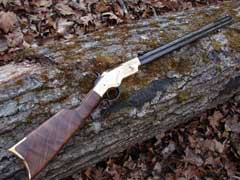
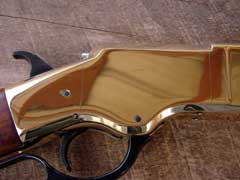
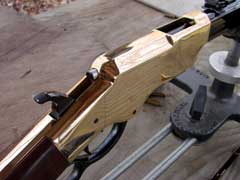
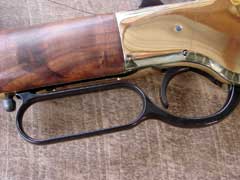
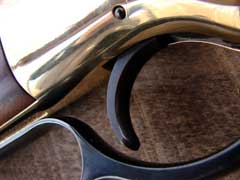
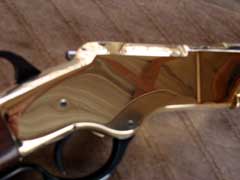


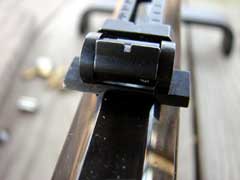
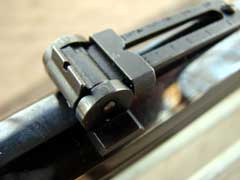
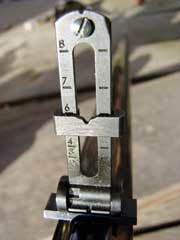
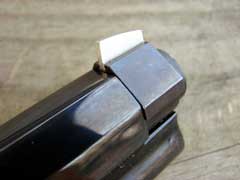
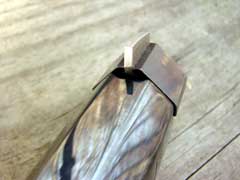
Ladder rear and blade front sights.

Magazine spring follower.
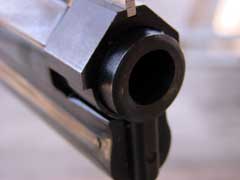
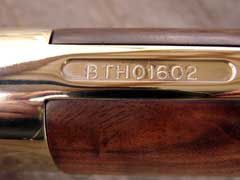
All new Henry serial numbers begin with BTH, in honor of the rifle's
inventor.
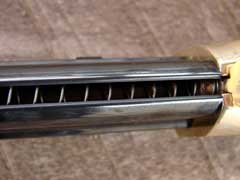
Open-bottom magazine tube is integral with the barrel.



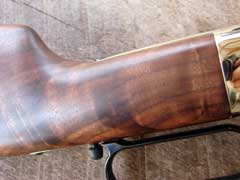


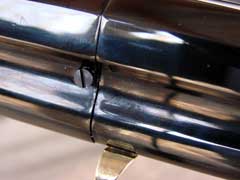
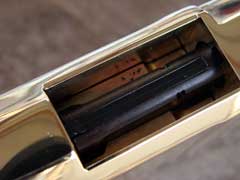
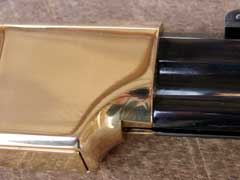
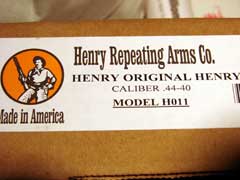
|
|
When Oliver Winchester took
over control of the Volcanic Arms Company in late 1856, he moved
the operation to New Haven, Connecticut. He did two things that
would change the history of firearms in the world. He changed
the name of the company to The New Haven Arms Company, and he
hired Benjamin Tyler Henry as his shop foreman. Henry went to
work on improving the Volcanic design to fire a 44 caliber
rimfire cartridge, and the Henry Rifle was born.
I can imagine at that had
this occurred today, some politician would go on a rampage about
“why does anyone need sixteen cartridges in the magazine?”,
but thankfully, people were smarter 154 years ago than they
appear to be today. The Henry was a real game-changer. There
were other repeating rifles and carbines introduced about the
same time, such as the Spencer, which was built in much higher
numbers and adopted by the Union Army, but had a lower capacity
and a slower rate of fire. The Henry was never officially
adopted by the Union, but many of them were purchased by
well-financed individual soldiers, and a few units had several
in their possession during the war. The Confederates referred to
the Henry as “That damn Yankee rifle that you load on Sunday
and shoot all week”. The Henry was the AR-15 of its day. It
was expensive to make, and expensive to purchase, but was
revolutionary in its rate of sustained fire, compared to the
muzzle-loading muskets in use by both armies during The War
Between the States.
The Henry also played a
significant role in the settling of the American West following
the war. For those who could afford one, it offered a lot of
firepower, compared to other readily-available weapons, even the
much more prevalent Spencer war surplus carbines and rifles.
Along with other Winchester leverguns, the Henry played a role
in the defeat of Custer’s 7th Calvary at the Battle
of the Little Big Horn in June of 1876. By that time, Winchester
rifles had been upgraded with King’s patents for an improved
magazine and loading gate, but the Henry still served well on
the battlefield in the hands of the American Indians, as it
continued to do with farmers, ranchers, and others who headed
West during the latter part of the nineteenth century.
The Henry is one of the
most highly-prized and sought-after rifles for well-heeled
firearms collectors today, with original rifles selling for many
thousands of dollars. Italian replicas of the Henry have been
available from importers in the US for several years, but the
Henry is once again being built in the United States, after an
absence of 148 years, by the company that bears the Henry name;
the Henry Repeating Arms Company of Bayonne, New Jersey.
While the original Henry
was chambered for the 44 Henry Rimfire cartridge, which used a
216 grain bullet (pointed or flat-nosed) loaded over 25 grains
of black powder (or 26
grains), that cartridge is long out of production. The new
Original Henry rifle is chambered for the 44 WCF centerfire
cartridge (44-40), with only the changes needed to fire the
newer cartridge. The 44 WCF was introduced by Winchester along
with the 1873 Winchester rifle, and has endured the test of
time, being popular for many years as a rifle and handgun
cartridge. Most ammunition sellers today list the 44 WCF as a
handgun cartridge, and it is frustrating to look online for the
ammunition listed under rifle cartridges, as it is usually
listed under the handgun ammunition sections. However, the 44
WCF was introduced in 1873 as a rifle cartridge, and it will
always be a rifle cartridge, even though it works well when
fired from a revolver.
The Henry Repeating Arms
Company has been around for several years now, initially in
Brooklyn, NY, and now in Bayonne, NJ with another manufacturing
facility in Wisconsin. For their first few years, they focused
upon building some smooth-running rimfire lever action rifles,
along with the Henry semi-automatic Survival Rifle, a rimfire
pump rifle, a full-sized 22 magnum bolt action, and the
Mini-Bolt 22, the latter being scaled for smaller shooters. I
bought a Henry 22 magnum Levergun for my Dad about a dozen
years ago, and bought my grandson a Golden Boy 22
Long Rifle Levergun two years ago for Christmas. Both are
excellent rifles, and made in the USA. Henry Repeating Arms
Company also now makes some excellent centerfire lever action
rifles, chambered for the 357 and 44 Magnum cartridges, the 45
Colt, 30-30, and 45-70 cartridges, as well as a Mare’s Leg
pistol, in both rimfire and centerfire versions.
Their latest rifle introduction is the one featured here:
“The Original Henry”, offered in a limited-edition engraved
model, or the slick-sided standard rifle shown in the photos
here.
The Original Henry, as
built by Henry Repeating Arms Company, is a beautiful rifle, as
were the ones made in the nineteenth century. On the new rifles,
of course, the quality of the strengthened brass and steel is
much better than the rifles built fifteen decades ago. The rifle
shown here wears a really good-looking piece of American walnut
for the buttstock, which is fitted well to the polished brass
butt plate and receiver. The twenty-four inch barrel wears an
integral magazine tube, as did the earlier rifles, and that unit
is built of highly-polished blued steel. This was one of the
hardest firearms to photograph with which I have worked in a
long time, as it is so well-polished that the surfaces reflect
light and images like a mirror. There was a time when all
quality firearms made in the US were finished like this, but
sadly, new firearms as well-finished as this Henry are hard to
find today. The rifle weighs in at just under nine and one-half
pounds on my scale, with an overall length of forty-three and
one-half inches. The length of pull measures thirteen inches
from the center of the crescent butt plate. The trigger pull
releases with just under four pounds of resistance on average,
with a slight amount of take-up before releasing. The magazine
holds thirteen 44 WCF cartridges, and has the traditional open
bottom and brass follower. The lever, hammer, bolt, and trigger
are polished dark blued steel, as are the screws. The front
sight is a naturally-colored steel blade, and the rear is a
traditional ladder type of blued steel, useful at moderately
long range.
This Henry has a very slick
action, as did all Henry and Winchester designs up through the
1876. The brass cartridge lifter design lifts the cartridges
straight up from the magazine, and the bolt smoothly pushes the
cartridge into the chamber. Ejection is just as slick, and this
Henry functions perfectly. Shooting this new Henry was a real
pleasure. Recoil is very mild, as the weight of the rifle soaks
up most all of it, and it is not painful at all to shoot, even
when firing from the bench for several hours. The rifle balances
well, just ahead of the receiver, and comes to the shoulder
quickly. The only ammo that I could find in stock anywhere were
two Magtech loads; a sporting load and a target Cowboy
Action load. Both use 200 grain lead bullets, with the
sporting load pushing them a bit faster. The sporting load,
fired over the chronograph at a distance of ten feet, averaged
1071 feet-per-second (fps). The Cowboy load averaged 1015 at the
same distance. My handload, which uses a .429 inch Tennessee
Valley 200 grain truncated cone lead bullet over 9.5 grains of
Universal powder in Starline cases with a WLP primer clocked an
average of 1201 fps at the same distance. The Henry handles
these .429 inch bullets as well as it does the traditional .427
inch 44 WCF bullets. Chronograph readings were taken at 541 feet
above sea level, with an air temperature of sixty-two degrees
Fahrenheit and a relative humidity of forty-four percent.
Accuracy testing was done
from a solid bench at a distance of fifty yards, and the Henry
proved to be very accurate. Five-shot groups ran from around the
one and one-quarter inch mark, up to three inches, with
representative groups shown in the photos, for each type of
ammunition tested. This is as good as I can do using this type
of sight, and I am certain that with better eyes and a better
shooter, these groups would tighten up, at least a bit. Still, I
was well-satisfied with the accuracy exhibited by this new Henry
rifle.
I am glad to see the Henry
in production once again in the USA, built by a company for whom
I have a lot of respect. Their motto is, “Made in America, Or
Not Made At All“. The new Original Henry rifle has a suggested
retail price of $2300 US, which is, in real dollars, less
expensive than the Henry of 150 years ago. A private in the US
Army in 1860 made $11 per month. A new Henry at that time would
cost him almost three months pay. A newly-enlisted soldier in
the Army today can buy a new Henry for about half that in
comparable base pay. There are also a limited number of engraved
Henry rifles, serialized from 1 to 1000 that have a suggested
retail price of $3495 US. Number 1 has been donated to raise
money for the NRA. All Original Henry serial numbers begin with
the initials BTH, in honor of Benjamin Tyler Henry, the inventor
of the rifle. The one shown here is serialized BTH01602, and
will not be going back to Henry Repeating Arms. It is one of the
classiest rifles I have ever owned. I have several rifles which
are lighter, more-powerful, flatter-shooting, and faster to
fire, but they are tools. This new Henry stirs my soul. I plan
to keep this rifle for a long time, and to take it to the NRA
Whittington Center in June for the Shootists
Holiday, and try out that ladder sight at long range.
Check out the extensive
line of American-made Henry firearms and accessories online at www.henryrepeating.com.
For the location of a Henry
dealer near you, click on the DEALER FINDER at www.lipseys.com.
To
order the Original Henry online, Click on the GUN GENIE at www.galleryofguns.com.
Jeff Quinn
NOTE: All load data posted on this
web site are for educational purposes only. Neither the author nor
GunBlast.com assume any responsibility for the use or misuse of this data.
The data indicated were arrived at using specialized equipment under
conditions not necessarily comparable to those encountered by the
potential user of this data. Always use data from respected loading
manuals and begin working up loads at least 10% below the loads indicated
in the source manual.
  
Got something to say about this article?
Want to agree (or disagree) with it? Click the following link to
go to the GUNBlast Feedback Page.
|
|
Click pictures for a larger version.


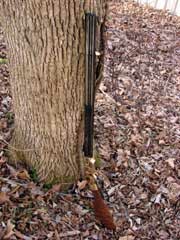

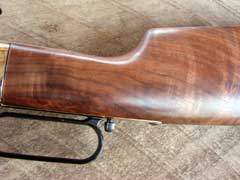
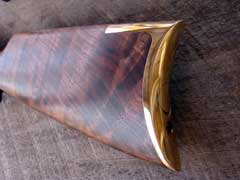
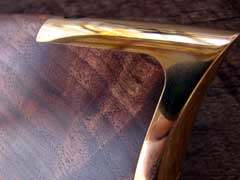
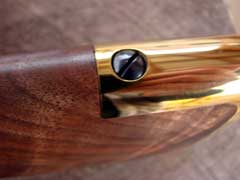
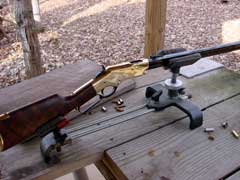
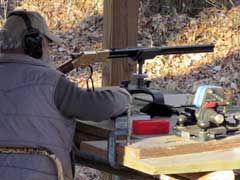
Accuracy testing from Target Shooting, Inc. Model 500
Rifle Rest.

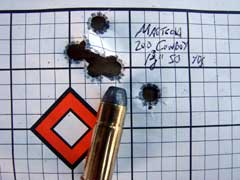
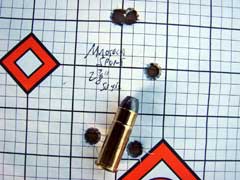
This is as good as the author can do shooting open sights at 50 yards.
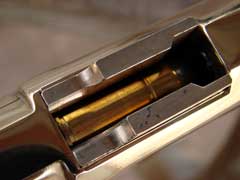
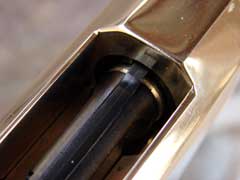
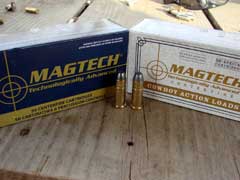
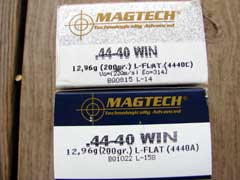
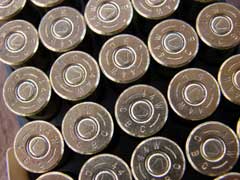

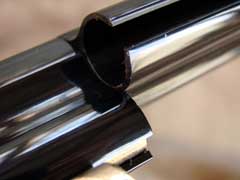

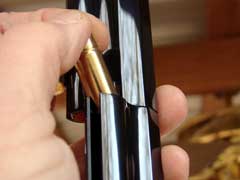
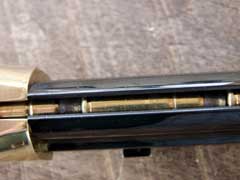
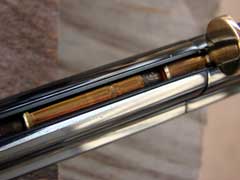
Loading is done by twisting the magazine tube and dropping cartridges into
the magazine.
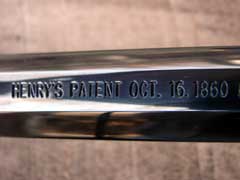
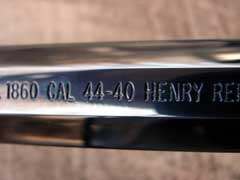
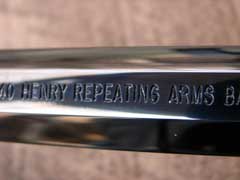
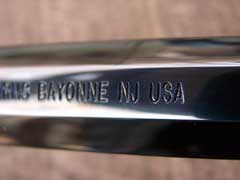
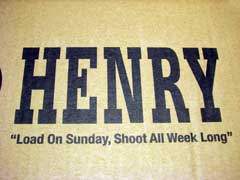
|
![]()